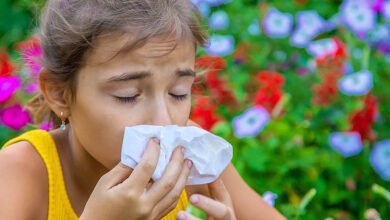Understanding Halloween: History, Traditions, and the Importance of Child Safety

Halloween is a day that captures the imagination of many around the world. Each year, as October draws to a close, streets fill with colourful costumes, glowing pumpkins, and festive decorations. For many families, it’s a time when children enjoy dressing up, collecting treats, and sharing laughter with friends and neighbours. Yet, beyond the costumes and celebrations lies a deeper story; one rooted in ancient history, cultural evolution, and modern reflections on safety, values, and community.
The Origins of Halloween
The story of Halloween stretches back thousands of years to the ancient Celtic festival known as Samhain (pronounced “sow-in”). Celebrated on October 31, it marked the end of the harvest season and the beginning of winter — a time often associated with darkness and uncertainty.
The Celts believed that on this night, the boundary between the world of the living and the dead became thin, allowing spirits to pass through. To protect themselves, people lit large bonfires, wore animal-skin costumes, and left out food to appease wandering spirits.
As centuries passed, these customs blended with various Christian and cultural traditions, gradually transforming into what we now call Halloween. While many of the original meanings have evolved, the day continues to hold a sense of mystery, creativity, and communal connection.
Modern-Day Halloween: Fun, Festivity, and Responsibility
Today, Halloween is marked by vibrant community activities, from costume parties to trick-or-treating and pumpkin carving. For children, it is often seen as a time of fun and adventure. However, it is also important to approach these celebrations with mindfulness, safety, and respect for our shared values.
1. Trick-or-Treating
Children often go door to door, saying “Trick or treat!” while collecting candies. Though joyful, this activity should always happen under adult supervision. Parents and guardians are encouraged to:
- Accompany younger children at all times.
- Inspect all treats before they are eaten.
- Encourage visits only to familiar or well-lit homes.
- Teach children to be polite, cautious, and aware of their surroundings.
2. Jack-o’-Lanterns
Carving pumpkins into glowing faces is one of Halloween’s most recognizable symbols. The tradition began with turnips during Samhain, meant to ward off unwanted spirits. Today, it’s a creative family activity, but one that requires care. Children should use child-safe tools and carve only under adult guidance to prevent injuries.
3. Costumes and Creativity
Dressing up allows people to express creativity and imagination. Whether as heroes, animals, or classic spooky figures, it’s important that costumes reflect modesty, safety, and respect. Avoid costumes that may frighten very young children or disrespect cultural or religious identities. Always ensure costumes are comfortable, visible, and flame-resistant.
4. Haunted Attractions
Haunted houses, corn mazes, and ghost tours are designed for entertainment and should be enjoyed responsibly. Parents should confirm that such venues are age-appropriate, safe, and reputable before allowing children to participate.
Values and Reflection
While Halloween can be a fun and educational cultural experience, it’s also important to remember our personal, spiritual, and moral values.
Families may use this season to:
- Teach children about cultural history and discernment.
- Reinforce kindness, generosity, and good manners — even in playful settings.
- Discuss themes of fear and courage in a positive, age-appropriate way.
- Emphasize gratitude, community, and togetherness over materialism or competition.
For some, Halloween may not be a day of celebration but rather one of observation or reflection. What matters most is respect for differing beliefs, for safety, and for the wellbeing of children.
In Conclusion
As families and communities participate in Halloween activities, let’s ensure that joy is balanced with safety, awareness, and integrity, protecting our children, upholding our morals, and cherishing the spirit of togetherness that this season can bring.





